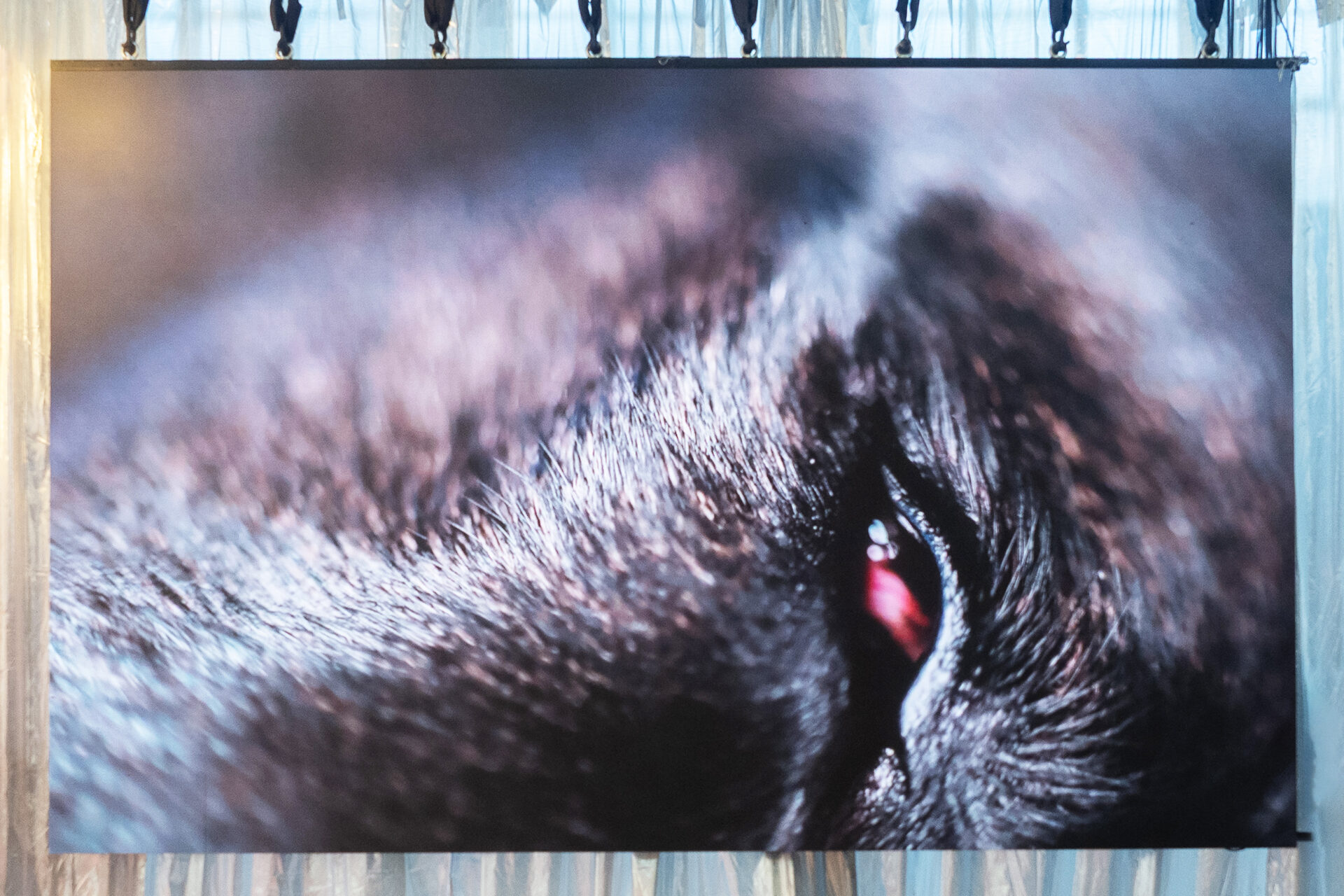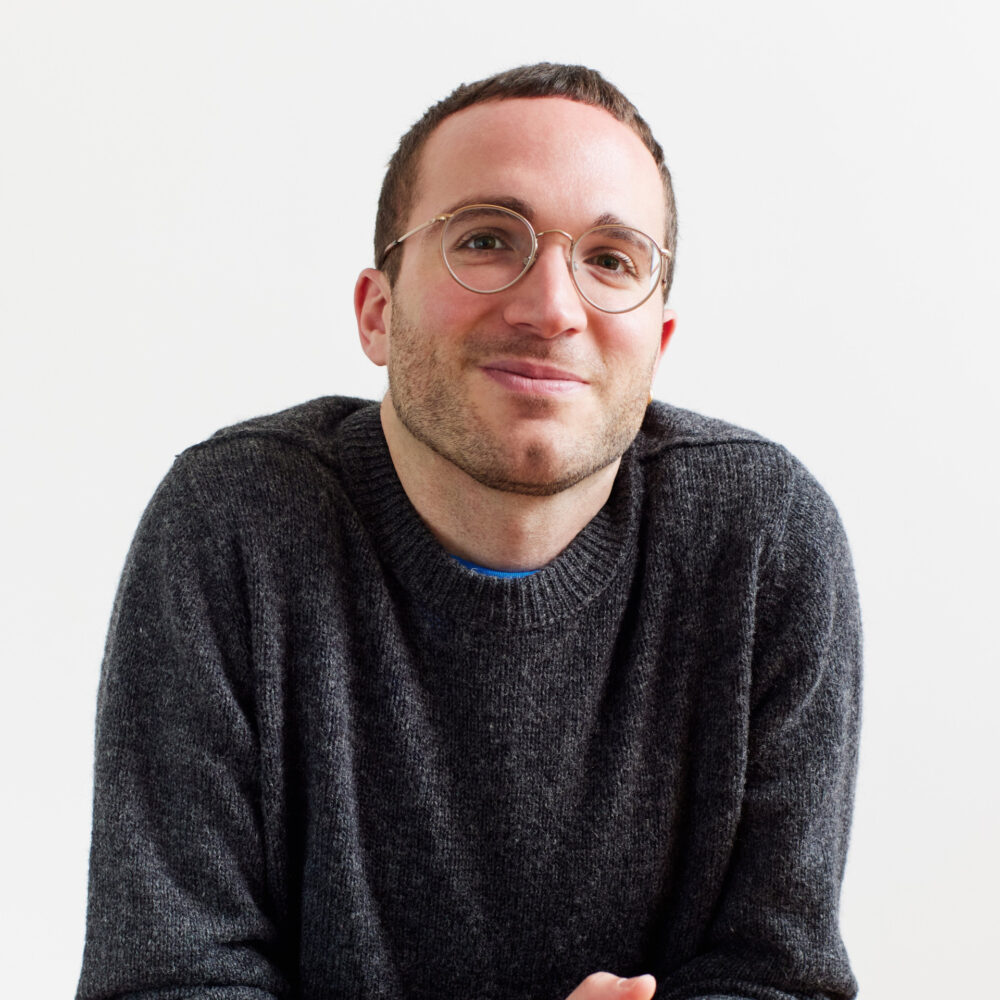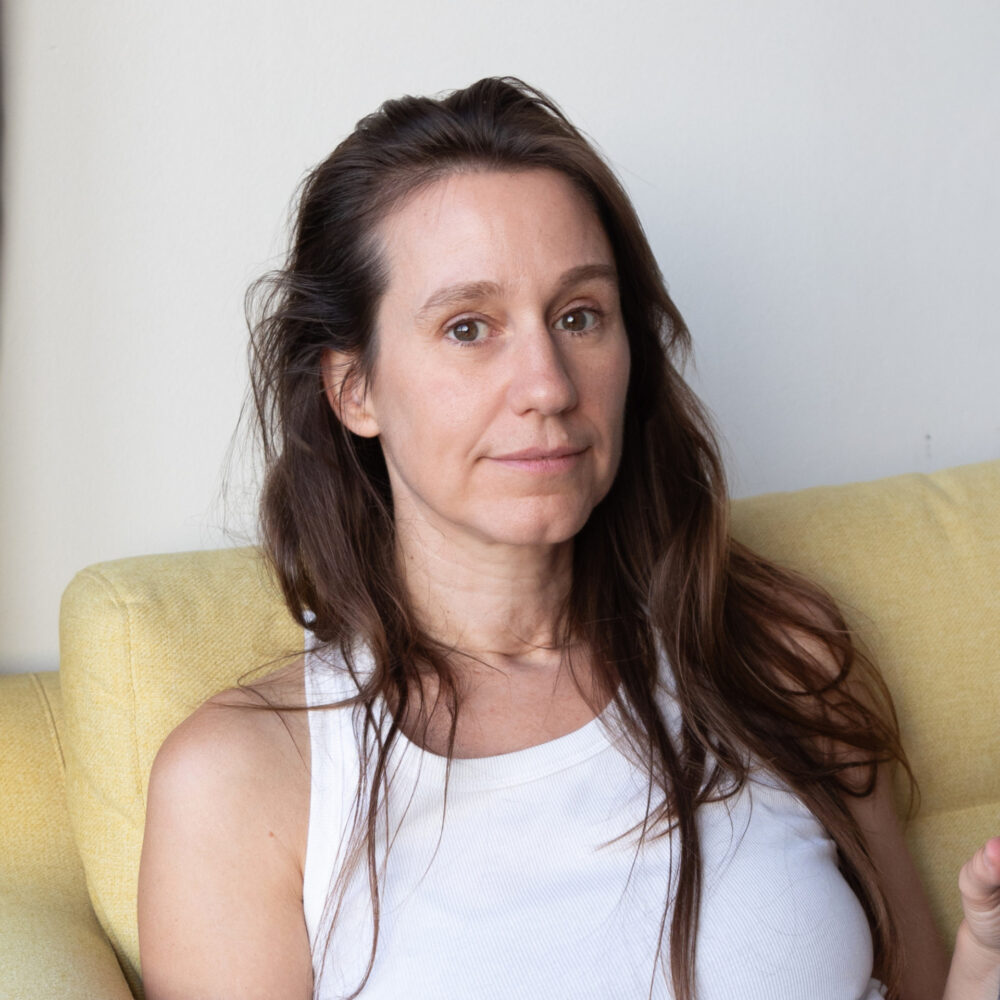main partners

The Screen
Art Brussels 2025 is proud to launch The Screen, a new curated screening program dedicated to video art. This initiative offers participating galleries the opportunity to present a video work by one of their artists, fostering deeper engagement with time-based media within the fair’s dynamic setting.
A professional jury, composed of Eliel Jones (Curator of Performance and Time-based Media at KANAL-Centre Pompidou) and Brussels-based filmmaker Alex Reynolds, have carefully reviewed the submissions by galleries and selected six standout video projects. Each selected work will be given a dedicated one-hour screening slot at the Tribune at the fair, ensuring maximum visibility for fair attendees. With two screenings per day from Friday to Sunday, The Screen establishes a focused space for video art, enriching the visitor experience and highlighting the medium’s significance in contemporary artistic practice.
By introducing The Screen, Art Brussels reaffirms its commitment to showcasing diverse artistic expressions, further cementing its position as a key meeting point for collectors, curators, and art enthusiasts.
The Screen programme
Friday 25 April — 1 pm : Pedro Barateiro, Love Song, 2024
A work on growing up with technology, the construction of gender and sexuality as an individual in western society, Love Song is a film that investigates autobiographical narratives using auto- fiction, documentary, and essay. It’s framed by the makings of masculinity and its implications in made-up realities and narratives, flooded with explicit content and mediated exchanges.
Love Song was filmed between Munich and Dubai, connecting two points in space: the painting Der Arme Poet from 1839 by Carl Spitzweg, from the Neue Pinakothek Munich collection, made in the height of German Romanticism, and the artificial Love Lake in the desert of Dubai. Both painting and lake are used to explore the connections between Romanticism and Capitalism, and the binary systems they maintained, fostered by patriarchal discourses and religion, to question forms of production and the changes generated within Western societies.
“Love Song departs from my teenage years and an awareness of my body as a space where the interior and exterior are confronted and the layers they engender. The film takes the example of my parents, who dated mostly by correspondence, and the romanticised aspects of their interac- tions set in late 1960s fascist Portugal, between immigration (mother) and colonial war (father). Love Song deals with my subjectivity and the realisation of the changes that transform me as an individual and part of the collective.”
The film also tries to address the uses and misuses of the word “love” and how it is appropriated in neoliberal Western societies under an imminent collapse of social and natural systems.
The work gathers found footage along with the artist’s material, with both concise and scientific references as well as a poetic and personal tone. The research for the work had its starting point in the Romanticism period, which coincides with the industrialization of the West. The work challenges the binary formatting of Western narratives by presenting an alternative to the representations of intimacy, using a feminist perspective to speculate on the need to deprogram individual and collective imagination to generate new circuits of creation and discussion.
Courtesy the artist and Galeria Filomena Soares, Lisbon (booth 5D-12).
Friday 25 April — 5:30 pm : Hannah Perry, Manual Labour, 2024
The video work, Manual Labour, explores the questions posed by the transition into motherhood. Jumping through personal and shared memory, the work exploits the material and textural qualities of the medium. Reflected images, spoken elements and soaring sound reflect the complex layering of the process.
Her use of industrial materials and the physically robust within the introduced works connote mechanical fabrication and this is by no accident – her immediate family, her brother and uncle, were welders. Littered with biographical and gendered centric references – the repeated presence of cars, clothing, and subjects – her work unfolds discussions about identity and investigates the complexity of the body.
Courtesy the artist and Galerie Kandlhofer, Vienna (booth 6D-08).
Saturday 26 April — 12:30 pm : Emmanuel Van der Auwera, White Cloud, 2023
White Cloud / 白云, investigates mysterious white clouds, the promises of communication technologies and the lives of laborers whose work helps us see the world and yet remains outside of the visible grid. White Cloud is an emotional speculative documentary that offers one of the first looks into an equally mysterious and influential Rare Earth Element mining district. While questions related to geopolitics, ecology, capitalism, conspiracy and future scenarios circulate around the film, at the core is the testimony of a lonely miner attempting to embrace a dark and desolate landscape in search of a better tomorrow. Using generative audio and visual tools, Van der Auwera looks into the deep underbelly of these technologies and the rarely spoken relationship between the earth’s bowels and humanity’s outer space dreams. The film has an uncanny, slightly grotesque feel as emerging AI technologies show their own flaws. It was not despite, but exactly because of these flaws that Van der Auwera was driven towards the utilization of these tools when they first became accessible. This aesthetic is quickly disappearing, leaving us with an illusion of reality where what doesn’t exist is indiscernible from what does. And herein perhaps lies an aspect of the artist’s focus, providing us with critical resources to read the physical world as it vanishes before our eyes.
Courtesy the artist and Harlan Levey Projects, Brussels (booth 5C-41).
Saturday 26 April — 5:30 pm : Céline Condorelli, After Work, 2022
The process of making a playground is the starting point for this reflection on the relationship between work and free-time, highlighting the hidden labour that underpins the production of culture. After Work follows the construction of the commissioned playground Tools For Imagination in South London and is a collaboration with artist and filmmaker Ben Rivers and poet Jay Bernard, who wrote and voiced the soundtrack.
It is intended to be viewed from Spatial Composition 13, a sculpture that functions as museum seating. Using the formal language of playground structures and (beach) loungers, it asks your body to remember how seating has shaped your encounters with art and culture.
Courtesy the artist and Galeria Vera Cortês, Lisbon (booth 5D-34).
Sunday 27 April — 12:30 pm : Mariona Berenguer, La Siesta, 2023
Contrary to the prevailing assumption that sleep is an expression of passivity and inertia, the video loop La Siesta (2023) by Mariona Berenguer reveals it to be an autonomous sphere of activity and a retreat from daily demands. Sleep does not contradict wakefulness, but rather is an extension and reorganisation of it, essential for maintaining our biological functions and strengthening social relations. The video shows how consciously and unconsciously experienced realities converge in the realm of dreams and how their interactions manifest themselves in the dreaming body.
Set in the liminal space between a vigilant mind and an exhausted body, La Siesta features an animalistic creature on the threshold of sleep. The camera remains tightly fixed on the restless movements of its eye. Neither fully opened nor closed, it seems to rush through information and emotions, absorbed in the fluid imagery of dreams. Indeed, during the phase of REM (Rapid Eye Movement) sleep, the brain is highly active, while the body remains paralysed to prevent it from reacting to subconscious stimuli. The eye marks a threshold between inner and outer worlds, turning inward as much as outward to grapple with the velocity and intensity of both lived and imagined realities. In this intimate space, the gaze of the camera seems to intrude like a voyeur, evoking a sense of unease and uncanniness. The artist likens the viewing experience to watching a film blindfolded—where events unfold beyond the field of vision yet deeply affect our perception.
The title, La Siesta, conjures the image of a nap on hot summer days, a fleeting moment of pause under stifling heat. Yet the nap is haunted by a soundscape of domestic noises—the hum of a dishwasher, the soft clicking of keyboards—that creep into the subconscious and stimulate its imagination. As the video loops endlessly, it reinforces the relentless progression of time, where rest and activity are inextricably intertwined. In this interplay, Berenguer crafts a dual narrative: one unfolding in the internal realm of dreams, the other in the ceaseless motion of their surroundings. Even in repose, we remain tethered to the world’s restless momentum.
Courtesy the artist and Galeria NAVE, Lisbon (booth 6D-07).
Sunday 27 April — 5:30 pm : Léonard Pongo, Tales from the Source, 2024
Tales from the Source is a medium-length movie engaging a visual dialogue with the varied land of the Democratic Republic of Congo (DRC) and its ancestral narratives.
It offers a gaze on the landscapes of the DRC to translate a sense of its unfathomable power, diversity and knowledge.
The scenery is presented as a character acting as a living entity and inhabited by the symbolism of Congolese traditions. The visual approach borrows techniques from multispectral imaging, resulting in an otherwordly experience with surreal lights and colour.
Combined with an original musical composition by Bear Bones, Lay Low, we enter into a sensory dialogue with the landscape, an intelligent, ageless being in constant transformation that challenges our perception.
Courtesy the artist and Kristof De Clercq gallery, Ghent (booth 5E-20).
Jury Members 2025

Eliel Jones
Eliel Jones is the Curator, Performance and Time-based Media at KANAL – Centre Pompidou, a new interdisciplinary museum of modern and contemporary art due to open in Brussels in 2026. His research interests and methodologies stem from intersectional approaches to queer and feminist discourse and are guided by his involvement in direct community action and solidarity. Prior to KANAL he was the Curator of the 2nd Brent Biennial, which took place across 12 venues in Northwest London. He has also held curatorial positions at Metroland Cultures, Cell Project Space and Chisenhale Gallery (all in London), where he worked towards realising multidisciplinary commissions by emerging artists including Alex Baczynski-Jenkins, Hannah Black, Lydia Ourahmane, Paul Maheke, Krzysztof Baginski, Carlos Maria Romero (AKA Atabey Mamasita) and Jose Funnell, amongst others.
Throughout the Covid-19 pandemic he curated ‘Queer Correspondence’, a mail-art initiative that reached nearly 1000 subscribers in 42 countries through monthly letter-sized commissioned projects by artists and writers. His independent curatorial projects include: Gelare Khosghozaran, ‘To Be the Author of One’s Own Travels’, Delfina Foundation, London; ‘do you host?’, Ujazdowski Castle CCA, Warsaw; ‘Acts of Translation’, Mohammed and Mahera Abu Ghazaleh Foundation, Jordan; and ‘Experiments on Public Space’, Dallas Museum of Art, Texas. Jones has written criticism on contemporary art and performance for various international platforms and publications, including e-flux, Frieze, Artforum, The Guardian, Flash Art, Mousse and X-TRA. He is currently a faculty member of the Curatorial Studies postgraduate programme at KASK School of Art & Conservatorium in Gent; a visiting tutor of De Ateliers in Amsterdam and curator of the forthcoming OFFSPRING 2025 exhibition; and a Trustee of PEER in London.
Photography: Henry Mills

Alex Reynolds
Alex Reynolds explores our modes of relation and affection as they appear embodied in cinematic language, questioning the medium’s conventions to explore the emancipatory potential of play and refusal. Blurring the limits of film language, her work transcends the strictly visual, finding expression in sound, text, photography, or sculpture.
Her work has been shown at Contour Biennale, Guggenheim Bilbao, Beursschouwburg, Index Foundation, Hollybush Gardens, Caixaforum Barcelona, Ca2m or the Miró Foundation, among others. Her films have been screened at festivals such as the BFI London Film Festival, FIDMarseille, Prismatic Ground, Zinebi or Documenta Madrid. She is currently visiting professor at the Royal Academy of Fine Arts (KASK) in Ghent.
Photography: Aurelie Bayad
“We were pleasantly surprised to receive a long list of submissions as part of the inaugural edition of The Screen at Art Brussels, and we spent some considerable time watching the video works together. In the end we were most drawn to work made in the past few years, not least because we were excited by the possibility of further circulating them at the fair. Though there isn’t a singular thematic line between these video works they all play with the documentary and experimental essay form, at times rubbing with the personal and fictional. From the jolting eye of a sleeping dog to mysterious white clouds, these works fulfil the artists’ markedly different impulses to show us something about the world today.” –– Eliel Jones & Alex Reynolds.
List of Selected Artworks
— Pedro Barateiro, Love Song, 2024, 30 min. Represented by GALERIA FILOMENA SOARES (Booth #5D-12)
— Mariona Berenguer, La Siesta, 2023, 6 min 48 sec. Represented by NAVE (Booth #6D-07)
— Céline Condorelli, After Work, 2022, 13 min. Represented by Galeria Vera Cortês (Booth #5D-34)
— Hannah Perry, Manual Labour, 2024, 17 min. Represented by GALERIE KANDLHOFER (Booth #6D-08)
— Léonard Pongo, Tales from the Source, 2024, 39 min. Represented by Kristof De Clercq gallery (Booth #5E-20)
— Emmanuel Van der Auwera, White Cloud, 2023, 18 min 30 sec. Represented by Harlan Levey Projects (Booth #5C-41)

